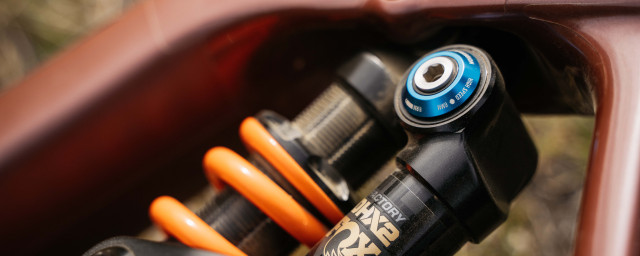Finish Line FiberLink is a latex-based tubeless sealant with added Kevlar fibres that does a great job of sealing punctures of various sizes. How does it compare against the very best tubeless sealants? Read on for the final verdict.
- Halo Fibre-Tech Tubeless Sealant review
- Pirelli Scorpion Sealant review
- Peatys Holeshot Biofibre tubeless sealant review
With multiple uses from body armour and high-strength cables to folding tyre beads and puncture protection for bikes, a few companies are now using Kevlar fibers – or fibres for us this side of the Atlantic – as a method of creating a particle to block and seal a puncture.
Finish Line FiberLink Tubeless Sealant – Technical details
The Finish Line FiberLink is a natural latex-based solution, which may be an issue for those with a latex allergy. Finish Line does produce a non-latex and ammonia-free sealant option but we did not have this available to test.
The sealant is available in three sizes with a smaller 8oz (240ml) that should be enough for two off-road tyres, a larger 32oz (940ml) and a workshop-sized one-gallon (3.8-litre) bottle.
Finish Line claims it can seal punctures up to 8mm and it also claims it is low odour, although I found it to be the strongest-smelling liquid of all we have tested (it's got a very strong latex and ammonia smell). The smaller bottle has a nozzle sized to fit over a Presta valve stem with the core removed but the larger bottles come without this nifty feature.
The sealant needs to be shaken well before pouring into a tyre. You can see the small black Kevlar fibres, which are supposed to clog within the latex solution and dry quickly in the event of a puncture.
In the event of a puncture or simply when installing a tyre, the use of CO2 is not advised by Finish Line as this can often cause the solution to dry up quickly. Finish Line suggests that it can be used in an emergency but it will reduce the effectiveness and should be replaced as soon as possible.
Finish Line FiberLink Tubeless Sealant – Performance
To test sealant performance, we created a standardised puncture test to assess each contender. The same exact tyre on the same rim for each sealant. The tyre used was a Halo GXC, measuring 47mm. Tyre sealant was added in the amount suggested by the manufacturer, and the tyre was inflated to 40psi. This pressure was chosen to give a realistic tyre pressure for all areas of off-road riding. A digital tyre pressure gauge was used to ensure that the pressure was identical on each test. After that, the tyre was rotated sufficiently to ensure that it was distributed evenly throughout the tyre. The tyres were all punctured by driving a 3mm nail through the carcass. The wheel was rotated to assess if the sealant had successfully sealed the hole. If the sealant worked, the test was repeated using a 5mm diameter nail, and if successful on the larger hole the remaining air pressure was measured with a digital pressure gauge and the result was recorded.
Finish Line FiberLink Tubeless Sealant performed well and, while there was some spray of sealant released on both 3mm and 5mm punctures, both were sealed quickly, with the larger 5mm puncture, losing just one psi of pressure.
Over several months within the tyre, the sealant has lasted well with very little drying out. While some of the Kevlar particles have stuck together, most of the fibres were well spread throughout the solution.
Finish Line FiberLink Tubeless Sealant – Verdict
Finish Line FiberLink is available in three sizes: a small 240ml bottle (£13), a larger 940ml bottle (£30) and a huge one-gallon (3.8-litre) bottle aimed more towards bike shops ( £130). There are a few other sealants available in workshop sizes such as the 5-litre options from Peaty’s (£125) and Muc-Off (£130).
The smaller bottle is more competitive in price with only a few options cheaper for the same size, such as Halo Fibre-Tech costing £8 for a 250ml bottle, and the 940ml bottle is on-par with many others with Vittoria Universal Tubeless sealant, Peaty’s Holeshot and Muc-Off also £30.
Finish Line FiberLink has a strong and distinct odour that I found off-putting and the latex-based solution could be a problem for anyone with an allergy. However, for those who can handle the smell, the sealing performance is excellent and longlasting.












Add comment